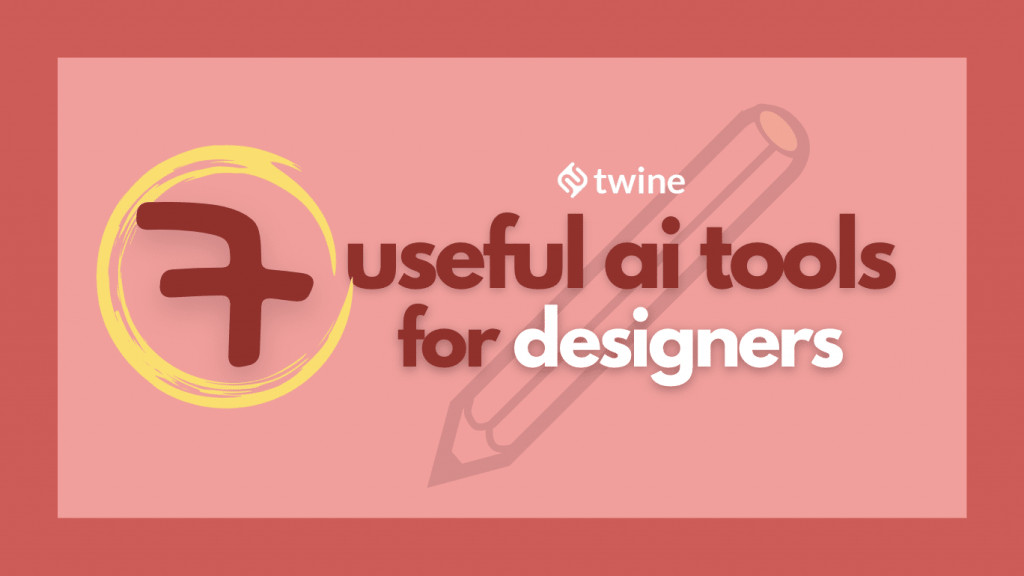
For more Creative Tools, check out the Freelancer Toolkit…
Having seven useful AI tools for UX and graphic designers can be invaluable for large-scale projects that would have to be done manually in the past.
Graphic designers spend hours perfecting projects like commercial avatars and company branding, which require a lot of skill. That said, it can often be helpful to have some artificial intelligence on your side to help automate some of the steps.
We’re looking for talented UX and Graphic Designers. Sound like you?
What Are AI Tools?
Like humans, AI encompasses a wide range of items designed to perform decision-making or problem-solving tasks. Their initial design was to assist humans with everyday tasks, but as advanced AI tools become more prevalent, they can replace manual human labor.
That said, many AI systems still require guidance from humans. Several industries currently use artificial intelligence software and tools, including:
- Financial Services: Fraud detection and algorithmic training
- Insurance Companies: Claims processing and underwriting
- Healthcare: Algorithmic medicine prescriptions and surgical computer vision
- Telecommunications: Predictive maintenance and optimizing networks
- Energy, Gas, and Oil: Collecting energy demand data and maintenance processing
- Aviation: Customer service and determining passenger route demands
How Are AI Tools Changing the Future of Graphic Design?
Did you know it’s predicted the AI software market will reach just under $800 billion in 2025?
That said, it’s easy to see the growing demand for any machine learning algorithm, whether used as an automation tool or providing valuable customer insights.
With the integration of deep learning and machine learning expertise, AI tools are transforming the world of graphic design before our very eyes.
A New Perspective
Using AI tools in graphic design allows you to see a project from a new perspective, one that has more to do with data.
With your artificial intelligence software, you can have the program collect valuable data that details the desires of your target audience. Then, you can use the information it gives you to make designs that your audience will love.
Not only does this help to alleviate the stress of market research, but it also helps to guarantee success on some level. Since you’ll be using collected data, artificial intelligence tests the products before your audience gets them.
Automating Design
The most obvious benefit of implementing artificial intelligence into graphic design is that it can help to automate the process.
With deep learning, your AI has the potential to create multiple designs in half the time it would take an artist to create one manually. That said, you’ll still have full control over the project as you can input your design preferences, needs, and even use your previous designs as inspiration.
A visualization software or a design thinking platform can also take your existing digital assets and transform them into something similar but fresh and new. With this, you can maintain your brand’s identity and integrity while putting a more modern face forward.
Streamlining Time
The user experience you’ll get from using AI instead of human workers will be significantly better than manually designing projects.
About 18% of surveyed individuals suggested they spend 20+ hours per week creating visual content. With your machine learning models, you can cut that time out entirely, helping you streamline massive and smaller projects.
AI graphic design tools are specifically designed to showcase the benefits of machine learning capabilities by streamlining time. They’ll help to refine your work, provide actionable insights, and suggest alternatives that can help make projects better.
7 Useful AI Tools for UX and Graphic Designers
Now that you know how AI can offer actionable intelligence to transform graphic design, let’s explore some of the industry’s top tools. Several great options exist, from unlocking advanced analytics to automated 3D visualization.
At a Glance
AI Tools | Main Features |
Designs.ai | LogoMaker SpeechMaker VideoMaker |
Adobe Sensei | Business intelligence Custom content creation Intuitive image discovery |
Fronty | |
Khroma | Color library storage In-depth search parameters Infinite color combinations |
VanceAI | Super HD enhancements JPEG artifact removal Old photo repairs |
Uizard | Wireframe testing Numerous project templates Drag-and-drop editing |
Let’s Enhance | Helpful image filters Quick image enhancements Numerous presets |
1. Designs.ai
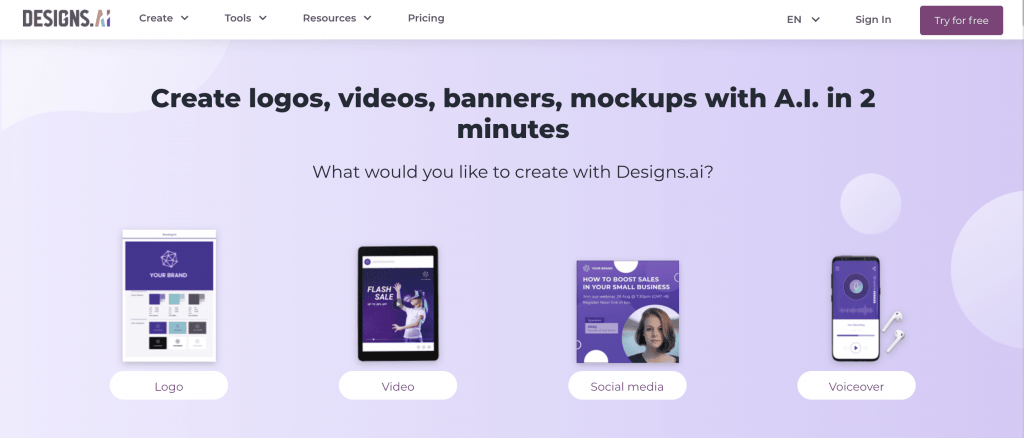
Designs.ai is a web-based program that’s fully accessible to anyone interested in creating professional portfolios without any designing experience. With the combination of its smart editor and wizard tool, you can build an extraordinary set of professional portfolios to display your marketing content.
What Are the Main Features of Designs.ai?
Some of the best features of Designs.ai are the following:
- LogoMaker: With LogoMaker, you can use AI to craft unlimited logo ideas using a full branding kit.
- VideoMaker: This platform is ideal if you’re looking for a tool to help with video editing. You can produce fully edited final cuts for multiplatform marketing campaigns in minutes.
- SpeechMaker: Why not harness the power of AI to create realistic voiceovers? SpeechMaker is uniquely available in over 20 languages.
Pros:
- High-quality tools for logo creation
- Easy-to-use video editing software
- Affordable package prices
- Continually updated with new features
Cons:
- Low-quality AI voices
- No easy-to-use mobile apps
2. Adobe Sensei
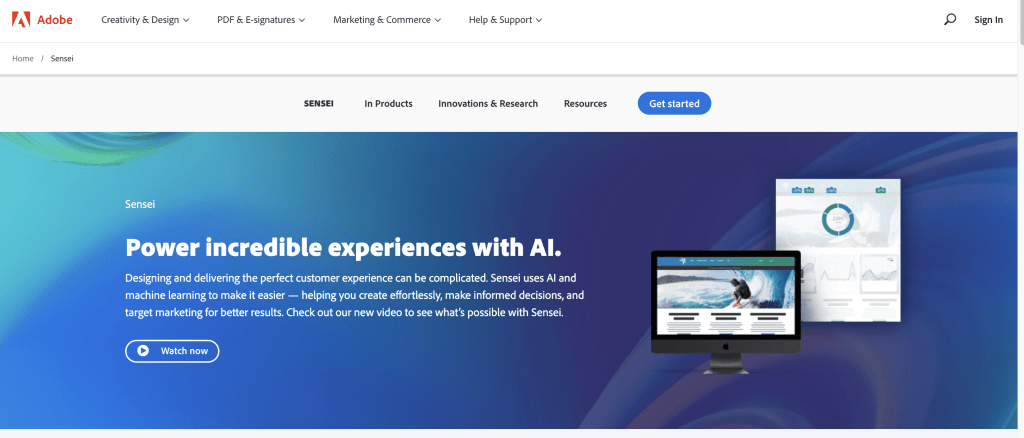
Adobe Sensei is often seen as one of the best platforms offering real-time graphic design insights.
Since it came out in 2016, businesses have been able to automate many tasks, such as making graphics instantly fit the right screen size and resolution. You’ll also find that its predictive analytics are remarkable for making professional design suggestions to help improve your marketing materials.
What Are the Main Features of Adobe Sensei?
Let’s explore the top features of Adobe Sensei. They include:
- Business Intelligence Platform
Adobe Sensei pairs with Adobe Marketing Cloud, allowing the platform to analyze data from past marketing campaigns. Using this step can help you make informed decisions about how to focus your efforts for more effective campaigns.
- Personalized Content Creation
Besides refining business processes, Adobe Sensei helps create customized, high-quality content for all your marketing materials. It can analyze text to determine tones, reproduces white papers based on previously uploaded content, and more.
- Image Discovery
Another massive part of the user experience with this platform is its enhanced image discovery.
Sensei will automatically recognize Adobe Creative Cloud media and create suggested tags to help categorize your content for searches. You’ll also benefit from automatically creating smart graphics and high-quality images in seconds.
Pros:
- Fantastic integrations with other software programs
- Professionally designed for graphic designers
- Pairs with most Adobe programs
- High-quality, comprehensive features
Cons:
- Authoring tools could use updates
- Has a complex UI
3. Fronty
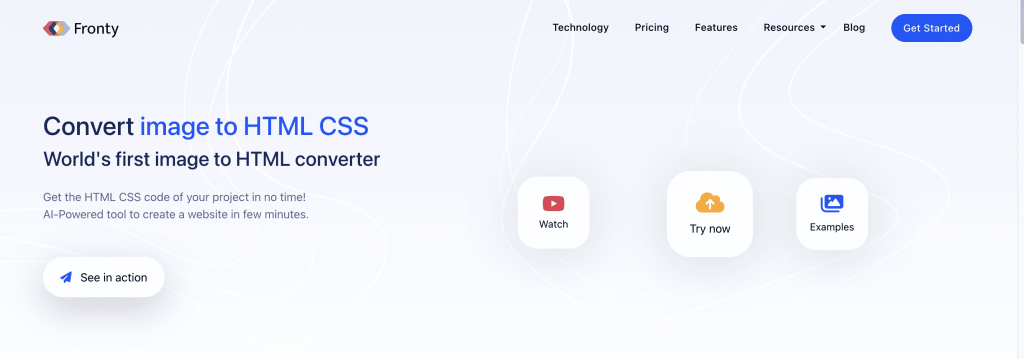
Fronty is a fascinating tool to assist with your software development and coding needs.
With its AI technology, Fronty will produce a source code when you upload an image to the site. It’s an innovative option if you’ve always wanted to build your website using HTML CSS code.
What Are the Main Features of Fronty?
Let’s review the highlights Fronty offers.
- Layout Editor
You’ll need a layout editor when designing your site for the best customer experience. With this platform, you’ll have easy-to-use online tools to help you design the most effective site.
- Website Hosting
Instead of going through a third party, Fronty manages all your website hosting needs and offers custom domains for site owners to consider.
- Built-in SEO
Search engine optimization is one of the most important parts of having a website. With this platform, its AI comes with built-in SEO that helps search engines rank your high-quality content higher.
Pros:
- Numerous affordable pricing plans
- All codes are W3C-valid and ISO/EIC-compliant
- Features many pre-made templates to use
- User-friendly layout editor
Cons:
- HTML processing times are lengthy
- Could have redundant CSS coding
4. Khroma
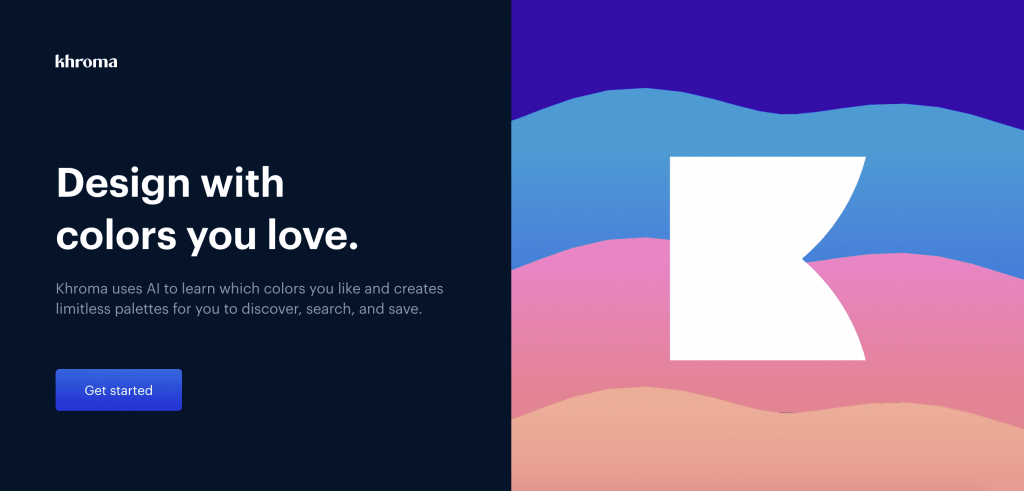
Khroma is a unique artificial intelligence software designed with customer intelligence in mind. With its creation, designer George Hastings finally had a tool to help him compare and search for different color combinations effortlessly.
With this generator, you can do the same, as it draws a selection of colors and human-made color palettes for you to review.
What Are the Main Features of Khroma?
Let’s dive into the best features of Khroma.
- Personalized Algorithm
The largest benefit of this platform is that it’s designed to learn from industry experts. With its predictive models, each time you pick a set of colors, the AI develops a neural network to generate more colors you like while blocking unappealing ones.
- Infinite Color Combinations
Finding it challenging to select the right combination of colors? With Khroma, its AI tech always produces fantastic color combos to be viewed as custom images, gradients, patterns, or typography.
- Exceptional Search
The most impressive aspect of Khroma is its search feature. You can browse for color options by tint, value, hue, color, RGB values, and hex codes.
Pros:
- Numerous search parameters for color combos
- Easy-to-use library for color combination storage
- Straightforward UI for beginners
- Limitless color combinations
Cons:
- Not recommended for color-blind users
- Still contains some beta features
5. Divi AI
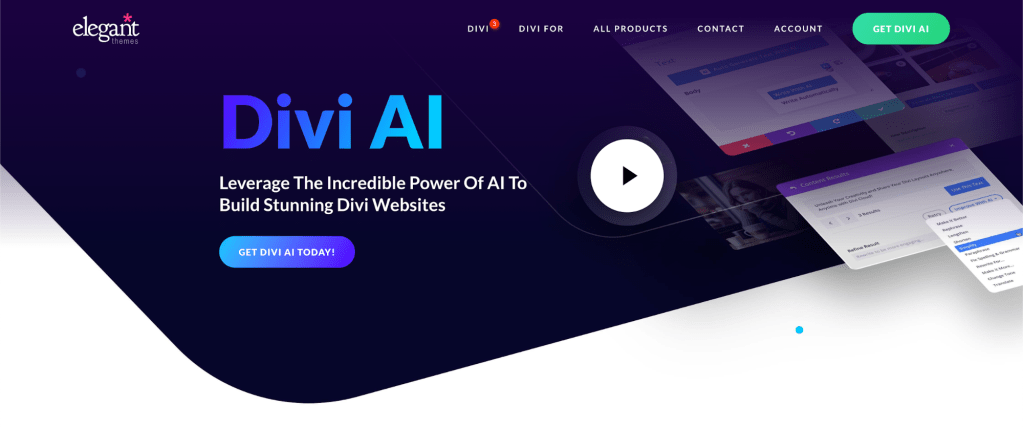
If you build or manage WordPress websites as part of your design workflow, Divi AI is a great tool to have in your toolkit. Integrated into the popular Divi Builder, Divi AI brings intelligent automation to web design without compromising creative control.
Whether you’re generating content, creating images, or customizing layouts, Divi AI works in real time within your builder, cutting production time and enhancing output quality. It’s particularly valuable for freelancers and agencies that want to streamline projects without relying on multiple tools or plugins.
What Are the Main Features of Divi AI?
Here are the key benefits of Divi AI:
- Layout Generation: Instantly build entire page structures, complete with placeholder content, styling, and images.
- Text AI: Generate or refine on-brand headlines and paragraphs, and microcopy directly from your WordPress site.
- Code AI: Write custom CSS for Divi modules using simple prompts, perfect for those who want advanced styling without technical hassle.
Pros:
- Fully integrated into the Divi Builder interface (no switching apps)
- Ideal for content, image, and code generation
- Unlimited website usage.
Cons:
- Requires Divi as a theme or plugin.
- It requires a paid subscription with a free trial period.
6. Uizard
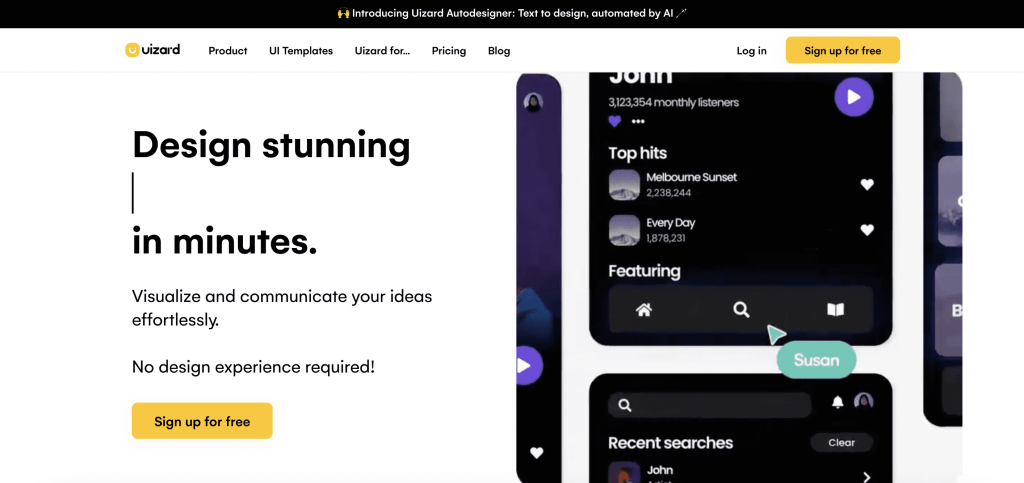
If you’re hunting for a beginner-friendly platform that helps to make AI tech more accessible, Uizard is a fantastic choice. It’s packed with several cloud-based designing tools and AI technology to help transform sketches into stunning designs.
Whether you have professional designing experience, it’s a valuable tool.
What Are the Main Features of Uizard?
Let’s explore a few features of Uizard.
- Drag-and-Drop Tools
The general design of Uizard is easy for anyone to use as it features drag-and-drop tools for you to design your projects.
- Project Versatility
Whether you want to create PowerPoint presentations or full professional websites, Uizard’s AI-powered wizard will help you create a top-quality product without any experience.
- Wireframe Mode
The unique feature of Uizard is that it helps you review the quality of your site from a customer perspective. With Wireframe mode, you can analyze your project in low fidelity, reviewing user flows for the best UX.
Pros:
- Easy to use
- Many free features
- Broad range of templates
- Numerous adjustable settings
Cons:
- Lacks audio integration
- May feel clunky
7. Let’s Enhance
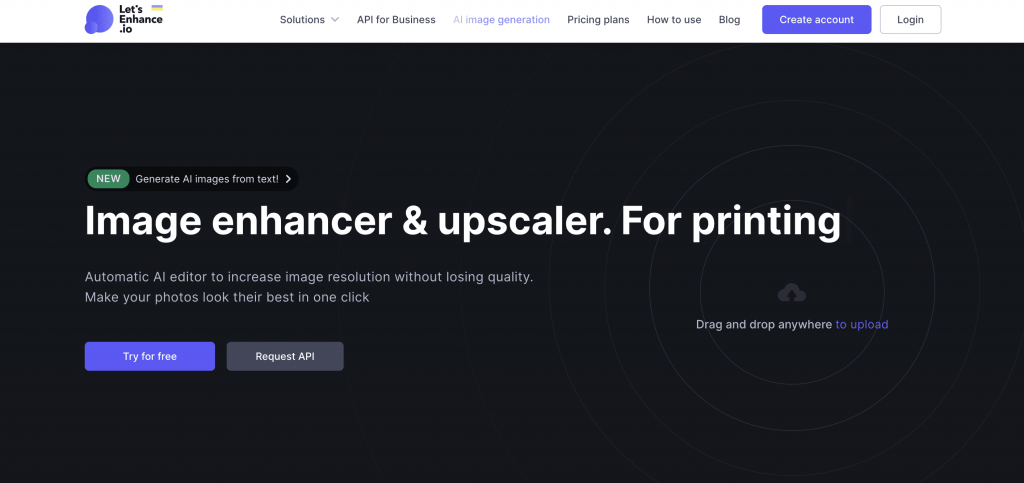
As a designer, have you ever tried to zoom in on an image only to find it comes out pixelated and unusable? With the help of Let’s Enhance, you’ll always have top-quality pictures to use, whether you’ve zoomed in or out.
What Are the Main Features of Let’s Enhance?
Let’s look at the main features of this platform.
- Filters
There are three main filters to choose from when using this platform.
The Anti-JPEG filter helps to remove artifacts, and the Boring filter assists with 4x upscaling without distortion. Finally, the Magic filter helps to add must-have details for stellar displays.
- Presets
If you want to save time with image editing, consider the collection of presets available on the platform. With one click, you can automatically convert images.
Pros:
- Great visual design tools
- Easy for beginners to use
- Affordable paid plans
- Impressive image scaling
Cons:
- No community for additional help
- Poorly designed “Boring” filter
Transform Your Design Projects With AI Tools
AI tools bring a remarkable advantage to the world of UX and graphic design.
By streamlining your operations, you can let machine learning models handle the tedious hands-on tasks and research for you. In many instances, this intelligent automation can even handle the creative aspects of your job, crafting remarkable displays to add to your marketing materials.
AI Tools for Graphic Design FAQs
1. What are the best graphic design tools for beginners?
A wide range of tools can help you get started in graphic design. A few top recommendations include:
- Image and graphic editors
- Animation creators and editors
- Brand asset storage
- 3D image creation tools
2. Will AI take over graphic design?
There’s a high probability the intuitive design of machine learning solutions will take over graphic design in the future.
As machine learning capabilities improve, the need for human designers becomes less and less. That said, there will always be a unique charm to human-created projects that AI machines will never be able to replicate.
When considering AI growth, it’s important to look at trends. It’s currently expected that the AI market will grow to $1.81 trillion in value by 2030. Also, 9 in 10 organizations like AI, as it gives them a competitive edge over others.
3. What are AI graphics?
AI graphics are uniquely designed images that a computer creates. Using data, artificial intelligence can create unique graphics such as brand logos and website backgrounds.
Some more unique machine learning solutions can take an artist’s previous work and update it to look fresher and more modern.
4. Will AI replace UX designers?
As helpful as AI can be in the designing process, it’s unlikely a unified machine will ever replace humans regarding user experience. To get a clear idea of how customers navigate apps and sites, you need to have a human do the job for the most accurate results.
5. What tools does a UX designer use?
The main goal of any UX job is to make sure the thing you’re working on is easy and quick for your audience to use.
That said, you’ll want any tools that can help refine the user experience for your project. Adobe Creative Cloud contains all of the tools that most UX designers require.
Want to be recognized as an expert in your field? At Twine, we have dozens of top-quality jobs being posted each and every day. There is a job waiting for your skills in everything from design to marketing, development, and copywriting. Join the marketplace of diverse creative talent here.



